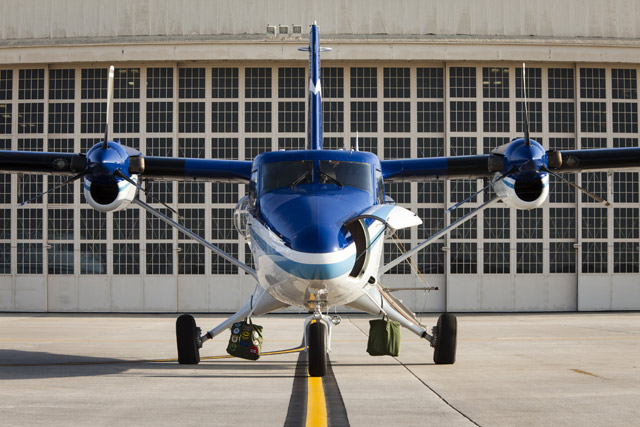FBW fears
Turtle tracker

A NOAA de Havilland DHC–6 Twin Otter awaits a mission to study sea turtles.
Where: MacDill Air Force Base, Tampa, Florida
Photographer: Mike Fizer
In a few short weeks the first flight reports of Embraer’s new Legacy 450 will be published, and within them still more explanations of the airplane’s fly-by-wire flight control system. This seven- to nine-seat “mid light” jet’s entry into service is significant. It will be the smallest business jet to have fly-by-wire. Those wanting to step up from older or more traditional designs will have to consider the Legacy 450 if they are in the market for a new airplane.
For those wanting to transition from their Citations, Hawkers, Learjets or turboprops, a culture shock awaits. These owners and pilots are deeply attached to the tried-and-true push rods, cables, and bellcranks they’ve been relying on. Why turn them in for controls run by some computer-spouted, free-ranging electrons?
This ignores the beneficial aspects of fly-by-wire. Like automatic protection against exceeding the flight envelope. Automatic zero-sideslip commands in engine-out situations. Auto-trim. And multiple levels of automation should normal control laws somehow malfunction—a condition with a one-in-a-billion chance of happening.
In the back of everyone’s mind lurks Air France 447, an accident that has gone down in some circles as a shining example of fly-by-wire’s shortcomings. But in many ways this accident was more of an example of lousy basic airmanship. And this accident’s root cause may well have been a previously-unknown type of icing caused by ice crystal accretions on the pitot tubes.
In my opinion the advantages of fly-by-wire outweigh the drawbacks. And it will no doubt be part of an evolving cockpit technology. Will fly-by-wire trickle down to all new turbine designs? Probably not. And what about the ultimate in automated flight—unmanned, remotely-piloted airplanes? Not any time soon.
—Thomas A. Horne, Turbine Pilot Editor


